Licorice, scientifically known as Glycyrrhiza glabra, is one of the most popular medicinal plants belonging to the Fabaceae family1. It is a perennial herb grown in temperate zones. The plant parts used are runners and roots, which are collected in the fall season. The medicinal use of licorice in western and eastern cultures dates back thousands of years, it is also one of the most common ingredients in Chinese medicine2. The name Glycyrrhiza is derived from the Greek terms ‘glykos’, meaning sweet, and ‘rhiza’, meaning root. It is native to the Mediterranean region and grown in India, China, Spain, Iran, Russia and Italy3. Licorice is also known as, Jothi-madh and Mulaithi (Hindi), Licorice, Liqourices, and Sweet wood (English), and Licorice, Liqourices, and Sweet wood (Sanskrit).
Did you know?
Licorice is the source of polysaccharides, simple sugars, proteins, amino acids, and mineral salts like calcium, sodium, potassium, iron, zinc, copper, phosphorous, magnesium, manganese, silicon, and selenium. It also contains vitamins like B1, B2, B3, B5, E and C. Pectins, starches, resins, and gums1.
The chief constituent of the roots is glycyrrhizin, a triterpenoid saponins 50 times sweeter than sucrose1.
I have great news for those suffering from indigestion problems! A study6 found that the root extract of licorice might be a natural and effective remedy for indigestion. It may reduce symptoms, improves individual discomforts, and boosts quality of life.
Dr. Siddharth Gupta, B.A.M.S, M.D (Ayu)
The properties of licorice are given as follows.
Due to its antibacterial and anti-inflammatory properties, there are many potential mulethi benefits and uses associated with licorice root extract4. Potential uses of licorice against some health conditions are given below.

The potential use of licorice in different cancers has been observed in lab-scale studies. However, more research is required to support the use of licorice against human cancer. Therefore, you are advised to strictly adhere to the doctor’s advice and treatment.
I would suggest licorice if you’re looking for a natural solution to keep your pearly whites healthy! It may have some incredible benefits for your oral and dental health. Yep, it’s true! Studies7 have shown that licorice and its powerful components are super effective against common oral problems such as cavities and gum diseases.
Dr. Rajeev Singh, BAMS

Oxidative stress and chronic inflammation are causes of chronic obstructive pulmonary disease. ISL has shown anti-inflammatory and antioxidant properties, due to which it was able to reduce the inflammatory cells in an animal study4. Licorice might be explored as a potential remedy for obstructive respiratory diseases. However, if you experience any respiratory problems, you must contact your healthcare provider immediately.

Glycyrrhizin, found in licorice root has shown liver-protective potential in viral hepatitis. Japan and China have developed glycyrrhizin as a liver protective medicine. The anti-inflammatory and antiapoptotic properties of glycyrrhetinic acid, a compound found in licorice, may provide liver-protective benefits4. However, if you are suffering from liver problems, reach out to your healthcare provider immediately and get a proper diagnosis.
I came across a study8 that showed the protective effects of licorice extract in the kidneys of diabetic rats. It suggested that it may help improve blood glucose levels and reduce kidney damage. Although licorice extract may be a natural super-hero for diabetes and kidney health, its effects on humans still need to be investigated.
Dr. Smita Barode, B.A.M.S, M.S.
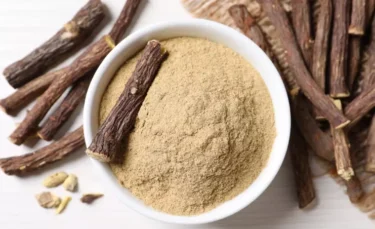
Many laboratory studies4 suggest that licorice extract might be a potential agent against bacterial infection. During trials, licorice extract has shown promising results against Candida albicans and Staphylococcus aureus infections. However, infections require a medical diagnosis and treatment. If you experience any signs of infection, contact your healthcare provider before using licorice.
In my opinion, licorice root extract might just be your secret weapon against hot flashes. Licorice root extract shows promise for ladies going through menopause. It might act as a natural remedy for managing hot flashes9.
Dr. Anuja Bodhare, B.A.M.S, M.D (Ayu)
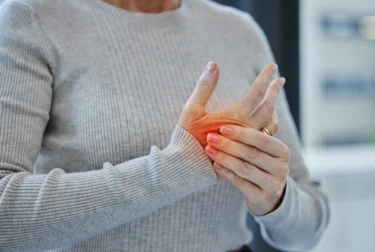
Inflammatory illnesses are becoming common and have a significant impact on daily life. Flavonoids found in licorice may be used as a potential medication for inflammation. Licorice extract has anti-inflammatory properties in managing various diseases, like acute kidney disease. ISL has shown anti-inflammatory activities in kidneys4. More research is needed to support the use of licorice in inflammatory conditions in humans. Therefore, talk to your healthcare provider and get a proper diagnosis.
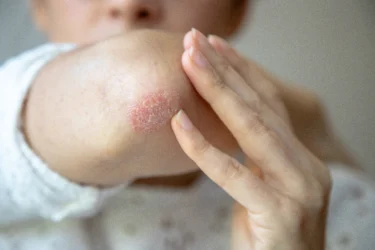
Though there are studies showing the benefits of licorice in various conditions, these are insufficient and there is a need for further studies to establish the true extent of the benefits of licorice on human health.
Also Read: Lemongrass: Uses, Benefits, Side Effects and More!
Roots and rhizomes of licorice can be used in the form of:
Your Ayurvedic physician will prescribe the form and dose as per your requirement.
You must consult a qualified doctor before taking licorice or any herbal supplements. Likewise, do not discontinue or replace an ongoing treatment of modern medicine with an ayurvedic/herbal preparation without consulting a qualified doctor.
Also Read: Shilajit: Uses, Benefits & Side Effects
Licorice is the word for mulethi in English. Potential mulethi side effects are shared below.
Before using licorice or any herbal remedy, you are advised to talk to your healthcare provider about the possible side effects associated with its use. It will help you avoid side effects.
Here are some general precautions you need to take with licorice.
Also, before using licorice for any health condition, you are advised to consult your doctor about the possible precautions associated with licorice.
Licorice root extract inhibits a major human drug-metabolising enzyme called the P450 enzyme. Therefore, it may increase the effects of drugs metabolised by the P450 enzyme2.
Also, if you are taking medicines for any health conditions, make sure you talk to your healthcare provider about the possible interactions of the drug with other herbs and medications.
Also Read: Pashanbhed (Bergenia Ligulata): Uses, Benefits, Side Effects & More!
The plant Glycyrrhiza glabra is commonly known as licorice. It belongs to the Fabaceae family. It is a medicinal plant3.
Licorice is called Atimaduram in Tamil3.
Licorice use should be avoided during pregnancy due to insufficient data available regarding its safe use5. Consult your healthcare provider before using any herbal remedy.
Licorice root is used as a flavouring agent for chewing gums, candies, baked goods, ice creams, and even soft drinks. The use of licorice extract and glycyrrhizin in foods has been approved by the United States Food and Drug Association, the Council of Europe, and the joint FAO/WHO Expert Committee on Food Additives1.
Glycyrrhetinic acid may help manage eczema, contact and allergic dermatitis, and psoriasis. In addition, Glabrene and isoliquiritigenin found in licorice might be helpful in skin disorders like melasma and age spots that arise due to the accumulation of melanin. Glabrene and isoliquiritigenin may also be useful skin-lightening agents2. However, before using any herb on your face or skin, you are advised to talk to your skin doctor.
Licorice might be used as a demulcent for sore throat. Licorice powder, as well as extract, may be used for managing sore throat3. However, if your symptoms don’t improve, talk to your healthcare provider.
Glycyrrhizin, the main constituent of licorice root, is 50 times sweeter than sucrose. Therefore, it can be used as a sweetener1.
1. Pastorino G, Cornara L, Soares S, Rodrigues F, Oliveira MBPP. Liquorice (Glycyrrhiza glabra): A phytochemical and pharmacological review. Phytotherapy Research [Internet]. 2018 Dec 1 [cited 2022 Mar 15];32(12):2323. Available from: https://pubmed.ncbi.nlm.nih.gov/30117204/
2. Murray MT. Glycyrrhiza glabra (Licorice). Textbook of Natural Medicine [Internet]. 2020 [cited 2022 Mar 15];641. Available from: https://www.ncbi.nlm.nih.gov/pmc/articles/PMC7348626/
3. Sharma V, Katiyar A, Agrawal RC. Glycyrrhiza glabra: Chemistry and Pharmacological Activity. Sweeteners [Internet]. 2018 [cited 2022 Mar 15];87. Available from: https://pmc.ncbi.nlm.nih.gov/articles/PMC7124151/
4. Wahab S, Annadurai S, Abullais SS, Das G, Ahmad W, Ahmad MF, et al. Glycyrrhiza glabra (Licorice): A Comprehensive Review on Its Phytochemistry, Biological Activities, Clinical Evidence and Toxicology. Plants (Basel, Switzerland) [Internet]. 2021 Dec 1 [cited 2022 Mar 15];10(12). Available from: https://pubmed.ncbi.nlm.nih.gov/34961221/
5. Licorice Root – Health Encyclopedia – University of Rochester Medical Center [Internet]. [cited 2022 Mar 15]. Available from: https://www.urmc.rochester.edu/encyclopedia/content?contenttypeid=19&contentid=licorice
6. Raveendra KR, Jayachandra, Srinivasa V, Sushma KR, Allan JJ, Goudar KS, Shivaprasad HN, Venkateshwarlu K, Geetharani P, Sushma G, Agarwal A. An Extract of Glycyrrhiza glabra (GutGard) Alleviates Symptoms of Functional Dyspepsia: A Randomized, Double-Blind, Placebo-Controlled Study. Evid Based Complement Alternat Med. 2012;2012:216970. doi: 10.1155/2012/216970. Epub 2011 Jun 16. PMID: 21747893; PMCID: PMC3123991. Available from: https://pmc.ncbi.nlm.nih.gov/articles/PMC3123991/
7. Shaikh S, Kumar SM. Beneficial effects of specific natural substances on oral health. Saudi Med J. 2017 Dec;38(12):1181-1189. doi: 10.15537/smj.2017.12.20516. PMID: 29209665; PMCID: PMC5787627. Available from: https://pmc.ncbi.nlm.nih.gov/articles/PMC5787627/
8. Kataya HH, Hamza AA, Ramadan GA, Khasawneh MA. Effect of licorice extract on the complications of diabetes nephropathy in rats. Drug Chem Toxicol. 2011 Apr;34(2):101-8. doi: 10.3109/01480545.2010.510524. PMID: 21314459. Available from: https://pubmed.ncbi.nlm.nih.gov/21314459/
9. Nahidi F, Zare E, Mojab F, Alavi-Majd H. Effects of licorice on relief and recurrence of menopausal hot flashes. Iran J Pharm Res. 2012 Spring;11(2):541-8. PMID: 24250477; PMCID: PMC3832176. Availlable from: https://pmc.ncbi.nlm.nih.gov/articles/PMC3832176/
Disclaimer: The information provided here is for educational/awareness purposes only and is not intended to be a substitute for medical treatment by a healthcare professional and should not be relied upon to diagnose or treat any medical condition. The reader should consult a registered medical practitioner to determine the appropriateness of the information and before consuming any medication. PharmEasy does not provide any guarantee or warranty (express or implied) regarding the accuracy, adequacy, completeness, legality, reliability or usefulness of the information; and disclaims any liability arising thereof.
Links and product recommendations in the information provided here are advertisements of third-party products available on the website. PharmEasy does not make any representation on the accuracy or suitability of such products/services. Advertisements do not influence the editorial decisions or content. The information in this blog is subject to change without notice. The authors and administrators reserve the right to modify, add, or remove content without notification. It is your responsibility to review this disclaimer regularly for any changes.
Sitopaladi churna is an Ayurvedic preparation used for digestive problems and various respiratory issues. Sitopaladi churna helps balance the kapha and pitta doshas. It is made from ingredients like cardamom (elaichi), cinnamon (twak), bamboo (vanshlochan), long pepper (pippali), and sugar candy (khandasharkara).
All these ingredients are cleaned and crushed to obtain a fine powder. The powder is then filtered to remove any coarse particles. Sitopaladi churna has a madhura (sweet) and katu rasa (bitter taste). This churna may help to eliminate ama (harmful toxins) out of the body1.
The quantity of ingredients in sitopaladi churna is2:
The inorganic elements present in sitopaladi churna are calcium, sodium, potassium, iron, magnesium, sulfate, phosphate, carbonate, nitrate, and chloride. The organic elements present in sitopaladi churna are carbohydrates, proteins, amino acids, steroids, flavonoids, alkaloids, tannins, and phenolic compounds2.
Did you know?
The various beneficial properties of sitopaladi churna may include3:
I would suggest sitopaladi churna in allergic disorders. There’s an important chemical called piperine found in the sitopaladi formulation. Owing to its capacity to stabilise mast cells, sitopaladi churna may be a justified treatment for allergic disorders13.
Dr. Siddharth Gupta, B.A.M.S, M.D (Ayu)

Sitopaladi churna contains expectorant properties that may help expel mucous from the airways. According to Ayurveda, cough is grouped into five categories: vata (dry cough that produces some mucous), pitta (cough that produces moderate and sticky mucous), ksataja (cough that occurs due to chest injury), and ksaya (cough that occurs due to tuberculosis-like chronic diseases).
Sitopaladi churna may be an helpful for all these types of coughs. It may be taken with honey, ghee, water, or other herbal medications. Sitopaladi churna may help with cough by acting on the central nervous system3. However these effects of sitopaladi churna may need further studies.

Sitopaladi churna contains deepan (appetizing) and pachan (digestive) properties that may help to enhance digestion. It also contains carminative properties that might be helpful in gas accumulation and bloating3. The studies seem insufficient to validate these claims, therfore consult an ayurvedic physician before taking sitopaladi churna for its effect on digestion.

The immune system in people with allergies responds to allergens like dust, pollen, dander, etc. by releasing a substance called histamine. Due to this, the person might experience symptoms like watery eyes or a running nose. Sitopaladi churna contains antihistaminic properties and might protect you from allergies4. You must visit a doctor immediately for relief in case of any allergic reactions.

The digestive enzyme amylase has to break down complex carbohydrates before they are absorbed. Carbohydrates are broken down into simple sugars and enter the blood leading to an increase in blood sugar levels. Sitopaladi churna may show α-amylase inhibition properties. This property might help prevent the body from absorbing these carbohydrates and prevents a spike in blood sugar after meals3. Diabetes is a major health condition and requires appropriate diagnosis and treatment from a professional doctor. Therefore, human trials of Sitopaladi churna are necessary to provide its potential usage for managing blood sugar levels in humans.

Anaemia can lead to shortness of breath, dizziness, tiredness, and irritability. The most common cause of anaemia is iron deficiency. Sitopaladi churna may help increase iron absorption by the body and thus helps in nutritional anaemia3. Further studies are needed to establish the claim of effect of sitopaladi churna for anaemia.

Sitopaladi churna combined with other herbal medications, along with modified diet and lifestyle modifications like 8 hours of proper sleep, 30-60 min of morning or evening walk, and abstaining from smoking and drinking proved to be effective in the management of migraine5. However these claims need further studies, you must consult a doctor for proper advice on migraines.

Sitopaladi churna may be helpful in conditions like fever related to flu, cold, chest congestion, pneumonia, tuberculosis, bronchitis, and other respiratory illnesses. This herbal preparation may help control respiratory infections due to its anti-inflammatory and antioxidant properties2. However, respiratory conditions may need medical supervision and diagnosis. Consult a qualified doctor for treatment of any respiratory condition.

Vocal nodules occur due to abuse or misuse of the vocal cords. Some professions require high-volume speech. This might lead to the formation of vocal nodules. Sitopaladi churna along with other herbal formulations may be used for managing vocal nodules. Studies show that it may give some relief from the symptoms and the person can regain their original voice6. But consult a doctor for advice before consuming sitopaladi churna on your own.
Though there are studies showing the benefits of sitopaladi churna in various conditions, these are insufficient. There is a need for further studies to establish the true extent of the benefits of sitopaladi churna on human health. Furthermore, every person may respond differently to these herbs. Therefore, it is important to consult a doctor before using sitopaladi churna for any medical condition.
In my opinion, when we combine the herbal product from Bambusa arundinacea found in sitopaldi churna with other medicines, it might create a powerful anti-inflammatory drug. It’s like a dream team for treating chronic inflammatory conditions like rheumatoid arthritis with peptic ulcers, which are quite common. This combination may also offer hope for long-term treatment and relief in the said conditions14.
Dr. Rajeev Singh, BAMS
Sitopaladi churna is available in two forms:
Sitopaladi churna can either be taken with honey, water or ghee10. One should always take the advice of an Ayurvedic physician before having sitopaladi churna. In addition, we recommend you do not replace or discontinue your ongoing medications with any ayurvedic or herbal preparations without seeking the medical advice of a qualified doctor. They will guide you with the best form and dosage in which the herb can be used per your health condition.
Also Read: Avipattikar Churna: Uses, Benefits, Side Effects and More!
There is not sufficient evidence for sideeffects of Sitopaladi churna and it may be safe when used by children and pregnant women. It is essential to consult an Ayurvedic physician and take only take prescribed doses3.
Also Read: Multani Mitti: Uses, Benefits, Side Effects & More!
Also Read: Ragi (Finger Millet): Health Benefits and Tasty Recipes for Losing Weight
Due to its kapha and vata dosha balancing qualities, sitopaladi churna might be helpful in the management of asthma symptoms. It helps to breathe easily by clearing the air pathways7,8. Every person may respond differently to these herbs. Therefore, it is important to consult a doctor before using sitopaladi churna for any medical condition.
Intercostal neuralgia is nerve pain right under you’re the ribs. There can be pain in the chest and upper back region. Sitopaladi churna may be helpful in the management of intercostal neuralgia9. It is however, important to consult a doctor before using sitopaladi churna for any medical condition.
The ingredients of sitopaladi churna are taken separately, crushed well to form a powder, and filtered through a clean cotton cloth. The ingredients are then mixed together to form a uniform mixture and then stored in an air-tight container10.
According to a case report Sitopaladi churna might be helpful in post-covid lung complications due to its affinity towards the respiratory system11. This may be followed under supervision and guidance of a qualified doctor.
Sitopaladi churna is also known by the names- sitopaladi choorna, sitopaladi choornam, sitopaladi chooran, etc12.
Yes, Sitopaladi Churna’s soothing properties can help ease the discomfort of a sore throat by reducing inflammation and providing relief from irritation. Mixing it with honey and consuming it may be beneficial for a sore throat.
Sitopaladi Churna is typically taken orally with honey or warm water. The dosage and frequency may vary depending on the individual’s age, condition and the Ayurvedic practitioner’s recommendation.
Sitopaladi Churna contains sugar candy, which may impact blood sugar levels. Individuals with diabetes should consult their healthcare provider or an Ayurvedic practitioner before using it and consider alternatives without sugar candy.
Sitopaladi Churna generally has a pleasant taste due to the combination of sweet and aromatic herbs like sugar candy and cardamom. Mixing it with honey or warm water can enhance its taste.
Ayurvedic practitioners often recommend taking Sitopaladi Churna after meals for better absorption and to avoid any potential discomfort on an empty stomach.
Disclaimer: The information provided here is for educational/awareness purposes only and is not intended to be a substitute for medical treatment by a healthcare professional and should not be relied upon to diagnose or treat any medical condition. The reader should consult a registered medical practitioner to determine the appropriateness of the information and before consuming any medication. PharmEasy does not provide any guarantee or warranty (express or implied) regarding the accuracy, adequacy, completeness, legality, reliability or usefulness of the information; and disclaims any liability arising thereof.
Links and product recommendations in the information provided here are advertisements of third-party products available on the website. PharmEasy does not make any representation on the accuracy or suitability of such products/services. Advertisements do not influence the editorial decisions or content. The information in this blog is subject to change without notice. The authors and administrators reserve the right to modify, add, or remove content without notification. It is your responsibility to review this disclaimer regularly for any changes.
Babool also called Acacia arabica, belongs to the family Leguminosae. Babool is a spiny, medium-sized, perennial tree commonly found throughout India1. The bark of the tree is known as Babur or Babul in Hindi. Today it is widely known as Gum Arabic as it was imported in large quantities in Arab. In India, babool is very commonly found in Maharashtra, Uttar Pradesh, Madhya Pradesh, Chhattisgarh, Jharkhand, Rajasthan and other dry regions of the country. Also, the thorny babool tree is seen in the neighboring Asian countries of Bangladesh, Sri Lanka, and Burma. It is native to North Africa and commonly seen in Egypt. It is more common in the western states of the peninsula. The vernacular names of babool are Babura, Kikar, Babula in Hindi Kaloabaval, Baval in Gujarati Babala, Babula in Oriya Babhula, Babhul in Marathi Babla in Bengali Babala in Assamese Indian gum Arabic tree, babula tree in English Kari Jail, Kari gobli, Sharmeeruka, Pulai Jali in Kannada Kikkar in Punjabi Sak in Kashmiri Thumma, Nallatumma in Telugu Karuvel, Karuvelan in Tamil Velutha Karuvelan in Malayalam Bavari, Kinkirata in Sanskrit1.
Did you know?
The seeds of babool contain rich amounts of fiber and proteins. Its pods contain more fiber and have a lesser amount of protein as compared to the leaves3. There are many nutritional benefits of babool, including tannin, alkaloids, a polyphenolic compound, terpenoids, glycosides, and saponins2.
The properties of babool include:
Recent studies suggest that the bark of Babool might be used as a natural dye for clothes. It is believed to bind dyes to the fabrics. This is fantastic news for those who love and enjoy wearing natural fabrics7.
Dr. Siddharth Gupta, B.A.M.S, M.D (Ayu)
Babool might have some potential uses in various conditions. However more studies are required. Some potential uses of babool are described as follows:

In a study, conducted by Crowch and Okello 2009 stated that babool had inhibitory activity on acetylcholinesterase enzyme. Acetylcholinesterase, an enzyme that breaks down the neurotransmitter acetylcholine, may be helpful in managing Alzheimer’s disease2. However, human studies are required to confirm its effectiveness on Alzheimer’s disease. Therefore it is essential first to consult a doctor and only use babool as a herb for Alzheimer’s.
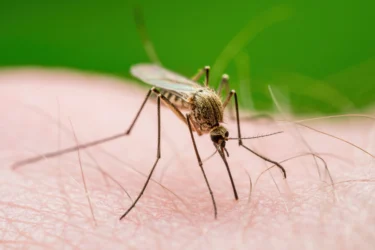
The water extract and ethyl acetate extract of babool was evaluated for antimalarial activity in an animal model by Malviya et al. 2011 and both exhibited antimalarial activity4. The extract of babool was found to have the highest anti-malarial activity against the malaria parasite Plasmodium falciparum. However, these studies are done on animals and not on humans. Therefore, we require more information on its safe usage on humans.

Babool may have shown anti-ulcer potential when tested on different animal models. The phenolic compounds present in babool might be responsible for the antiulcer activity2. In another study by Agunua et al. 2005, babool was tested for anti-diarrhoeal activity in animals. Initially, babool showed a relaxation effect followed by a contraction effect in the jejunum (middle part of the small intestine) of the animals. It also showed a 100% reduction from diarrhoeal infection in another animal model5. Therefore, it might indicate that babool may be beneficial for managing symptoms of diarrhoea. However, this research is insufficient as these studies are not done on humans. Hence, more studies on humans are required to suggest the potential use of babool for digestion. Therefore it is essential to first speak with your doctors and only use babool as a medicine.
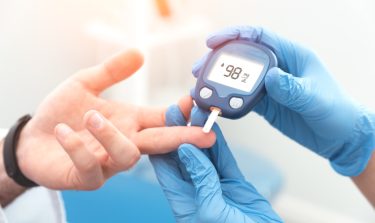
Studies have seen the blood glucose-lowering activity of babool extract, in an animal model studied2 by Kharya et al. 2010. The results showed that the babool extract might have a blood glucose-lowering effect. It exhibited a reduction in blood glucose, triglycerides, and cholesterol. This means it may help lower the risk of heart disease as well. Diabetes is a major health condition and requires appropriate diagnosis and treatment from a professional doctor. Therefore, human trials of babool are necessary to provide its potential usage for managing blood sugar levels in humans.
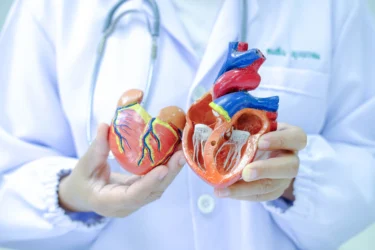
The antihypertensive activity of babool was tested in an animal model and humans (Gilani et al. 1999). The extract of babool was found to lower arterial blood pressure and give antihypertensive activity. In human studies2 conducted by Omaima et al. 2016, a drop in systolic and diastolic blood pressure was observed in participants with type 2 diabetes. This suggests that babool may be a potentially useful agent to lower blood pressure, especially in persons with diabetes5. However, these studies are insufficient and more new studies are required. Therefore, people should take advice from a doctor to stay updated about the latest benefits related to any herb.
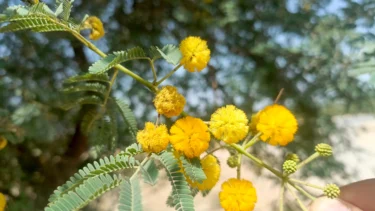
A study2 by Kalaivani and Mathew 2010 reported that babool is a highly accessible source of natural antioxidants. It may be used in inflammation, cancer, and diabetes. The high antioxidant property of babool might be due to the phenolic compounds present in it. These antioxidants may fight the free radicals that are produced in the body. However, this information is insufficient and requires extensive research to support this claim.

The gum, flower, and leaf extract of babool were evaluated for anticancer activity in an animal model by Meena et al. 2006. Babool was found to affect tumor growth and showed a cytotoxic effect on cancer cells obtained from a human. In an animal study4, the use of babool was found to reduce tumor development. However, cancer is a serious health condition that might require proper treatment and diagnosis. So it is better first to have a consultation with a doctor. And more research is required to develop an accurate scope of babool for cancer-related problems in humans.
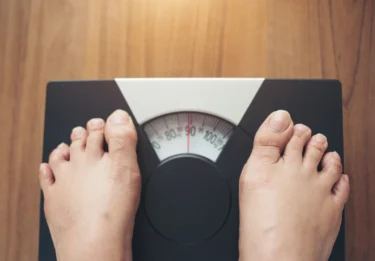
Babool was investigated for its weight management activity in a human study by Omaima et al. 20165. A highly significant decrease in BMI (body mass index) was seen in prediabetic and diabetic groups, implying that babool might benefit weight management. However, this study is insufficient we require more human studies to provide the true extent of babool for weight management in humans.

A study2 conducted by Banso et al. 2009 was done to evaluate the antimicrobial activity of babool. The study showed that the bark extract might have antimicrobial activity against bacteria like Staphylococcus aureus, Streptococcus viridans, Escherichia coli, Shigella sonnei, and Bacillus subtillis. This study suggested that babool extract might be a potential antimicrobial agent. In another study by Kalaivani et al. 2010, babool showed the highest activity against 2 fungi strains (Aspergillus niger and Candida albicans) and 3 bacterial strains (Salmonella typhi, S. aureus, and E. coli). Babool may also be known for its antiviral activity against the virus Hepatitis C in infected liver cells. However, this information is insufficient because these studies are not done on humans and require more studies to be done on humans to support the use of babool for managing infections in humans.
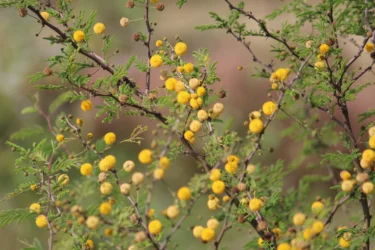
In a study5 by Eline et al. 2004, the extract of babool was found to enhance the production of milk in rats and was shown to increase the production by 59% in an hour. However, human studies are required to confirm its activity on humans to stimulate higher milk production in nursing mothers. Therefore lactating mothers need to be aware of the safe usage of babool during these times. Also a doctor’s consultation is essential.
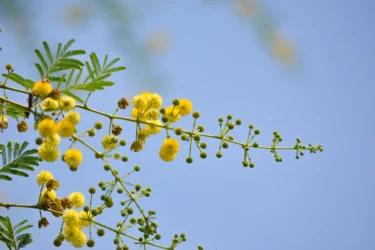
Prolapse means a displacement of an organ from its normal position. The decoction of babool bark may be used in rectal prolapse. The decoction of root bark may be used for stomach pain. The leave decoction is used in the form of nutool (a method of pouring the solution from a height over the specific part) in prolapse4. However, its effectiveness on humans requires more testing. However, more studies on humans are required to support the potential uses of babool for rectal prolapse. Therefore, a doctor’s advice is necessary.

The tender leaves of babool might be beneficial for treating mouth ulcers. It may be useful to clean the mouth, relieve pain, stop the bleeding of the gums, and might also help tighten the teeth5. However, its effectiveness requires confirmation via human studies. Therefore, people should consult their doctors and only use them to overcome the above-mentioned issue. Though there are studies showing the benefits of babool in various conditions, these are insufficient. And there is a need for further studies to establish the true extent of the benefits of babool on human health. Furthermore, every person may respond differently to these herbs. Therefore it is important to consult a doctor before using babool for any medical condition.
Spice up your life with your partner using Babool! Other than medicinal uses, Babool might be used as an aphrodisiac to enhance sexual life.
Dr. Rajeev Singh, BAMS
Babool can be used as:
One should always take the advice of an Ayurvedic physician before having babool. In addition, we recommend you do not replace or discontinue your ongoing medications with any ayurvedic or herbal preparations without seeking the medical advice of a qualified doctor. They will guide you with the best form and dosage in which the herb can be used per your health condition.
Did you know Babool might act as an expectorant as well? Researchers suggest that Babool might have the property to expel cough from the airways that might help to relieve the congestion.
Dr. Smita Barode, B.A.M.S, M.S.
Regular consumption of babool might have some side effects associated with stomach.
Having babool in moderation might be safe. However one must follow general precautions.
Also Read: Lemongrass: Uses, Benefits, Side Effects and More!
A review report (Ulbricht et al. 2008) suggested that babool was found to interact with amoxicillin (antibacterial medicine). It might affect the absorption of amoxicillin6. Therefore, avoid babool when you are taking amoxicillin. Thus, if you are taking antibacterial/antibiotic medicine, you must consult an Ayurvedic physician before consuming babool products. They will direct you to the better way to have it.
Babool in English is called an Indian gum Arabic tree1.
Babool can be used as powder or decoction1. Small bark, juice of babool leaves, and tender leaves can be used. The powder form of flower, leaves, bark, pod, and wood may be used for leucorrhoea. Chewing babool bark and a decoction of the bark may be useful in cough. The paste or juice of babool leaves may be applied to lower the swelling and redness of the eye4. However, babool should not be used as self-medication. It is essential to take the doctor’s advice; they will recommend you the best form and dosage based on your health condition.
Babool is considered safe but has a few side effects. It might cause constipation and maybe harmful to the rectum, intestine, and chest5. Therefore, before using babool, please consult with your doctors.
The small branches of babool may be beneficial for strengthening the teeth as they are used for brushing the teeth4. This fact is insufficient and requires a doctor’s advice to back this claim.
There is not much data on its usage during pregnancy. Therefore, be on the safer side and avoid babool during pregnancy or consult your doctor before taking babool during pregnancy.
Babool was found to be beneficial for diabetes in various animal models2. However, its study in humans is not reported. Therefore, more studies on humans are required. Diabetes is a severe health problem that must be accurately diagnosed and treated by a qualified doctor.
Chewing of bark and decoction of babool might be helpful in relieving cough4. But we require more information to suggest the usage of babool for managing cough. People should not use it to self-medicate on their own prior to consulting a doctor.
The tender leaves of babool might be helpful for mouth ulcers. It might also be used to clean the mouth, relieve pain, tighten the teeth, and reduce gum bleeding4. However, this information is insufficient to say the potential benefit of babool for mouth ulcers. You can consult a doctor before using it.
There is not much data on its safe usage during breastfeeding. Therefore, avoid babool during breastfeeding or consult your doctor before taking babool.
Babool was found to be beneficial for malaria in an animal model4. However, its effect on humans is still not studied. Therefore, more human trials are required to suggest the potential uses of babool in managing malarial infection.
Babool was found to interact with amoxicillin, as suggested in the review report (Ulbricht et al. 2008). Therefore, avoid babool if you are taking amoxicillin6. However, if any harmful effect is observed, please get in touch with your doctors.
Babool was found to have anti-ulcer properties when tested in an animal model (Bansal et al. 2012)2. However its study in humans is still not reported. Therefore, we require more studies on humans to confirm the beneficial effect of babool for ulcers.
A human study5 (Omaima et al. 2016) found babool to lower the BMI (body mass index) of prediabetic and diabetic patients. Therefore, it might be helpful to lose weight. However, this information is insufficient and requires more studies to back this claim. We recommend you should consult a doctor before using babool for weight management.
Disclaimer: The information provided here is for educational/awareness purposes only and is not intended to be a substitute for medical treatment by a healthcare professional and should not be relied upon to diagnose or treat any medical condition. The reader should consult a registered medical practitioner to determine the appropriateness of the information and before consuming any medication. PharmEasy does not provide any guarantee or warranty (express or implied) regarding the accuracy, adequacy, completeness, legality, reliability or usefulness of the information; and disclaims any liability arising thereof.
Links and product recommendations in the information provided here are advertisements of third-party products available on the website. PharmEasy does not make any representation on the accuracy or suitability of such products/services. Advertisements do not influence the editorial decisions or content. The information in this blog is subject to change without notice. The authors and administrators reserve the right to modify, add, or remove content without notification. It is your responsibility to review this disclaimer regularly for any changes.
Ashwagandha (Withania somnifera) is a popular herb in the Ayurvedic system of medicine. It is a small shrub that belongs to the Solanaceae family. It might be useful for different diseases and mostly as a nervine tonic (has a soothing effect on nerves). Ashwagandha is commonly called Indian Ginseng or Indian winter cherry. Ashwagandha is known for its rasayana (tonic) property. Rasayana is a herbal or metallic formulation that stimulates a youthful physical and mental state of health as well as happiness1.
Ashwagandha is cultivated in dry regions of South Asia, Africa, and Central Asia. More than 50 chemical constituents have been isolated from different parts of the ashwagandha plant1.
Did you know?
In 100 grams of ashwagandha, the nutrients found are:
The potential properties of ashwagandha are2:
Ashwagandha is also called an ‘adaptogenic’ herb or a ‘royal’ herb since it helps reduce stress and helps your body adapt to changes. It rejuvenates various body systems like the immune, reproductive and endocrine systems9.
Dr. Siddharth Gupta, B.A.M.S, M.D (Ayu)
The potential uses of ashwagandha for human health are as follows:
Ashwagandha might have anxiolytic (anxiety-relieving) properties that are similar to that of the drug lorazepam. Both ashwagandha and lorazepam showed to help reduce anxiety in animal models. Ashwagandha might also exhibit potential antidepressant properties. This indicates that Ashwagandha might help with depression and anxiety1. However, more research is required. Anxiety and depression may need serious attention and one should seek medical help from a professional for it.
Ashwagandha might have potential anti-arthritic properties that may be widely accepted and reported. Ashwagandha might help relieve pain by soothing the nervous system. In an experimental study6, patients were given a formula containing ashwagandha. This herbal formulation showed the potential to reduce the severity of pain and disability1,4. However, arthritis is a serious condition and must be diagnosed and treated by a doctor.
Ashwagandha is a popular Ayurvedic rasayana and belongs to medhyarasayanas, a subgroup of rasayanas. Medhya means mental/intellectual ability. Ashwagandha might help enhance memory and intelligence. This potential of ashwagandha for cognition was seen in children with compromised memory and old age as anecdotal evidence1. However, such claims lack scientific backup. Therefore, more research is required.
The circulatory system and cardiovascular health are adversely affected due to mental stress. Stress also affects the body’s antioxidant defence system7. Ashwagandha might help the body adapt to stress. It may also be effective in improving mental and physical health5. However, more research is required to ascertain such claims.
In a study8, treatment with an aqueous extract of ashwagandha showed potential to increase the pain threshold (a point beyond which a trigger produces pain) compared to that of placebo, showing that ashwagandha might be an analgesic agent. However, further research is required to state these as concrete facts.
Ashwagandha might help deal with problems related to sleep and may contain sleep-inducing properties. It might also help one fall asleep faster and have an improved sleep quality7.
Though there are studies that show the potential uses of ashwagandha in various conditions, these are insufficient and there is a need for further studies to establish the true extent of the benefits of ashwagandha on human health.
Ashwagandha may be helpful in combating hair loss and promoting hair growth. Hair loss usually occurs due to stress. The lactones present in ashwagandha can reduce the levels of cortisol hormone in the body, which relieves stress10.
Dr. Anuja Bodhare, B.A.M.S, M.D (Ayu)
The important formulations of ashwagandha include:
It is also available in the form of tea, pills, gummies, or tincture. The roots, seeds, leaves, and flowers of ashwagandha can be used for medicinal purposes.
You must consult a qualified doctor before taking any herbal supplements. Do not discontinue or replace an ongoing treatment of modern medicine with an ayurvedic/herbal preparation without consulting a qualified doctor.
Did you know ashwagandha contains high levels of polyphenols, mainly catechin, which is responsible for its antioxidant actions? All the parts of ashwagandha, including the roots, leaves and fruits, are rich in catechin, which provides potential health benefits12.
Dr. Smita Barode, B.A.M.S, M.S.
The safety of the long-term use of ashwagandha has not been fully documented. However, the most common side effects of ashwagandha are:
The less common side effects are:
Also Read: Shilajit: Uses, Benefits & Side Effects By Dr. Anuja Bodhare
Ashwagandha might also cause liver damage. It is essential to call your healthcare provider when you experience any side effects, particularly those consistent with liver damage like itchy skin or jaundice7. Therefore, kindly consult an Ayurvedic physician before using ashwagandha. They will tailor the prescription according to your health needs.
Ashwagandha may be helpful in improving the performance of swimmers as it boosts stamina. It is possible that the duration that can be covered by swimmers taking ashwagandha is longer than those not taking it1.
Dr. Ashok Pal, B.A.M.S.
Ashwagandha must be avoided in some conditions like:
Kindly do not self-medicate, alter, replace, or discontinue any ongoing treatment. Please consult a doctor.
Ashwagandha is derived from two words: ashwa, meaning ‘horse’ and gandha, meaning ‘smell’. It is named so because the fresh roots of ashwagandha emit the smell of a horse. It is believed to boost vitality and strength in your body, comparable to a horse11.
Dr. Rajeev Singh, BAMS
It is essential to take precautions when using ashwagandha with:
To make sure that ashwagandha does not interfere with other medications, it is essential to consult your physician4.
Also Read: Arrowroot Powder: Uses, Benefits, Side Effects By Dr. Smita Barode
Ashwagandha is a well-known herb used in Ayurvedic medicine. Its common names include winter cherry and Indian ginseng. It is obtained from a small evergreen shrub known as Withania somnifera. Ashwagandha might be helpful for a wide variety of ailments7.
In India, ashwagandha is cultivated in Uttar Pradesh, Gujarat, Rajasthan, Punjab and Madhya Pradesh4.
The decoction of the roots of ashwagandha might be helpful for colds and chills. The root bark might be helpful for asthma4. Kindly do not self-medicate. Consult a doctor before taking ashwagandha for the common cold.
In Ayurvedic medicine, the root of ashwagandha is used as an anti-inflammatory agent by an Ayurvedic physician for dealing with tumours, swellings, scrofula (a type of tuberculosis), and rheumatoid arthritis (a condition affecting joints and bones)4. However, you are advised not to use ashwagandha for the above-mentioned conditions by yourself. Kindly consult an Ayurvedic physician for the same.
Ashwagandha is indicated in conditions like syncope (temporary loss of consciousness associated with insufficient blood flow to the brain), piles, tumours, cervical lymphadenitis (enlargement of neck lymph nodes), gout (a type of arthritis), diseases of the skin, vitiligo (a disorder that causes the skin to lose color), lockjaw, heart failure, abscesses (a painful collection of pus), stiffness of the knee, cachexia (muscle and weight loss), bone fracture and diabetic carbuncle (cluster of painful boils)4. Kindly consult a doctor. Do not self-medicate.
Ashwagandha, an adaptogenic herb, is known to reduce stress, boost immunity, improve cognitive function, and enhance overall vitality. Its active compounds may help regulate cortisol levels, promote relaxation, and support physical endurance, making it a popular choice in traditional medicine and wellness practices.
The recommended dosage of ashwagandha typically ranges from 300 mg to 600 mg per day for most adults, divided into two or three doses. However, it’s crucial to consult with a healthcare professional to determine the appropriate dosage based on individual health factors and specific needs.
While ashwagandha is generally not associated with weight gain, some studies suggest it may support weight management by reducing stress-related overeating and regulating cortisol levels. However, individual responses may vary, and it’s advisable to consult with a healthcare provider before incorporating ashwagandha into a weight management regimen.
Ashwagandha has been studied for its potential to increase testosterone levels in men with low levels or infertility issues, attributed to its ability to reduce stress and improve overall hormonal balance. While research shows promising results, individual responses may vary, and consulting with a healthcare professional is advisable before using ashwagandha for this purpose.
Disclaimer: The information provided here is for educational/awareness purposes only and is not intended to be a substitute for medical treatment by a healthcare professional and should not be relied upon to diagnose or treat any medical condition. The reader should consult a registered medical practitioner to determine the appropriateness of the information and before consuming any medication. PharmEasy does not provide any guarantee or warranty (express or implied) regarding the accuracy, adequacy, completeness, legality, reliability or usefulness of the information; and disclaims any liability arising thereof.
Metals have been used in Ayurveda and other Indian medical systems since ages, but they were also widely used in Chinese and Egyptian civilizations in 2500 B.C. Bhasma is an Ayurveda metallic mineral preparation prepared with herbal juice or decoction and then exposed for Ayurvedic purposes. A Bhasma is ash created by burning the original material goes through an extensive purification process, followed by the reaction phase, which involves the addition of various minerals and/or herbal extracts1. In general, the medicinal indications of Swarna/gold can be found in almost all ancient medical classics, such as the Charak Samhita (1500 BC), Sushruta Samhita (1000 BC), and Astang Hridaya (400 AD). Around the fourth century, the creation of Rasa Shastra began, and from then on, Swarna has been dealt with comprehensively in Rasa Shastra texts, with masterstrokes of its pharmaceutics and therapeutics. Swarna is the most outstanding of all metals, and it is classified as part of the Sara loha group, which means ”essence” or a noble metal. Tuberculosis, anemia, cough, debility, sterility, and muscular dystrophy have all been treated with the calcined form (Swarna Bhasma). Moreover, it is thought to be the best rejuvenator because it promotes longevity and prevents aging2.
It demonstrates different therapeutic activities like:
The tiny gold particles in Swarna Bhasma, measuring approximately 28-35 nm, have a unique ability to reach the affected areas when taken orally. This may allow for the continuous release of gold particles which is necessary for the desired beneficial effects4.
Dr. Rajeev Singh, BAMS
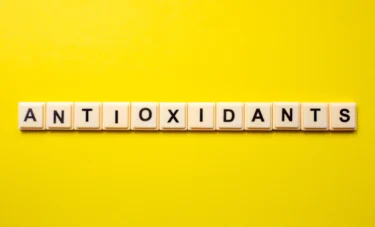
Swarna Bhasma is a free radical scavenger, which means it consumes and removes free radicals from the body. Several proteins and enzymes in our body help to minimize the production of reactive oxygen species (O2, OH, H2 O2, and so on). After oxidative assault with acetic acid, two essential enzymes, superoxide dismutase (SOD) and catalase were assessed in two groups, Swarna Bhasma treated and control animals, blood or liver homogenate. Swarna Bhasma increased SOD activity (267 percent in serum SOD and 75.8 percent in liver homogenate, compared to the corresponding controls) and catalase activity (80 percent compared to control hemolysate). This could be linked to the patient’s improved pathophysiological status as well2. Via this free radical scavenging activity, it acts as an antioxidant and reduces inflammation.

Traditional gold preparations used in Ayurveda and Unani medicine had anxiolytic, anti-depressive, and anticataleptic properties with a large margin of safety. In a study2, treated animals showed a decrease in immobility time in the forced swimming test. They demonstrated a reduction in haloperidol-induced seizure scores.

The analgesic effects of Ayurvedic Swarna Bhasma, a calcined gold preparation, have been examined in various animal studies. Swarna bhasma was found to have analgesic efficacy in mice when tested using chemical, thermal, electrical, and mechanical methods. Swarna bhasma is thought to have opioid-like action which reduces pain2.
Swarna Bhasma is traditionally regarded as a valuable formulation that may help manage insomnia and promote better sleep5.
Dr. Siddharth Gupta, B.A.M.S M.D (Ayu)

To assess brain damage due to poor blood supply and its alterations, various enzyme parameters were used. Ayurvedic Swarna Bhasma significantly restored altered values to near-normal levels. This implies that gold preparations may have potential in cerebrovascular disorders2.
Experience the golden secret to a sharper mind and a resilient body with Swarna Bhasma! Studies state that by taking a small dose over time, this remarkable remedy might enhance memory and immunity7.
Dr. Smita Barode, B.A.M.S M.S.
Gold has long been recognised for its antibacterial properties and its ability to modulate the immune system. However, when combined with honey and clarified butter, its effects may expand even further. This powerful combination might increase the scope of its effects to activate immune cells within the body7.
Dr. Anuja Bodhare, B.A.M.S M.D (Ayu)
Swarna Bhasma is believed to possibly enhance the potentiality. This traditional remedy may also contribute to a glowing complexion6.
Dr. Ashok Pal, BAMS
Also Read: Ashwagandharishta: Uses, Benefits, Side Effects & More!
In patients with rheumatoid arthritis, the effect of gold salt treatment has been investigated. When rheumatoid arthritis patients who were already receiving gold therapy were compared to those who had previously been treated or those who had never had this therapy, lower synovial fluid substance P levels (an inflammation related chemical) were seen, though not statistically significant2. Thus, use of Swarna bhasma in arthritis is not proven.
Use of Swarna bhasma suppressed production of a chemical called prostaglandin in vitro. In addition, in vitro, gold inhibited two human skin epidermis enzymes. These findings point to several potential mechanisms for gold’s impact in skin conditions like pemphigus with actions like disruption of the inflammatory cycle and inhibition of skin enzymes implicated in blister production2.
There are at least three types of gold-induced side effects: painful neuropathies i.e. nerve pain which are sometimes accompanied by sleeplessness and anxiety; peripheral neuropathy, i.e. damage to peripheral nerves of the limbs; and encephalopathy, including symptoms such as melancholy and psychosis2.
Gold nanoparticles cling to cancer cells. They sparkle and are excellent at dispersing and absorbing light. This helps in quicker detection of cancer cells using gold. Epidermal Growth Factor (EGF) is a protein found in many cancer cells. They have Growth Factor Receptor (EGFR) all over their body. Usually, healthy cells do not usually express the protein in the same way2.
Immunoglobulin-secreting cells are inhibited by gold. The activation of different complement pathways is inhibited by gold. Swarna bhasma inhibits numerous immune responses to antigens. The extent of gold’s immunoregulatory effects is unknown, and the relationship between these effects and its therapeutic properties is uncertain2.
Disclaimer: The information provided here is for educational/awareness purposes only and is not intended to be a substitute for medical treatment by a healthcare professional and should not be relied upon to diagnose or treat any medical condition. The reader should consult a registered medical practitioner to determine the appropriateness of the information and before consuming any medication. PharmEasy does not provide any guarantee or warranty (express or implied) regarding the accuracy, adequacy, completeness, legality, reliability or usefulness of the information; and disclaims any liability arising thereof.
Links and product recommendations in the information provided here are advertisements of third-party products available on the website. PharmEasy does not make any representation on the accuracy or suitability of such products/services. Advertisements do not influence the editorial decisions or content. The information in this blog is subject to change without notice. The authors and administrators reserve the right to modify, add, or remove content without notification. It is your responsibility to review this disclaimer regularly for any changes.
Hingwashtak Churna is a polyherbal Ayurvedic formulation sold in the form of powder. It is composed of eight main ingredients, namely Cuminum cyminum, Ferula foetida, Zingiber officinale, Piper nigrum, Piper longum, Nigella sativa, Trachyspermum ammi, and Saindhava Lavana (rock salt). The formulation is listed in the Ayurvedic Formulary of India and in Indian Herbal Pharmacopoeia. All the ingredients have a role to fulfil. Phytochemicals like alkaloids, glucosides, tannins, and phenols are present in Hingwashtak Churna1.
Did you know?
Apart from phytochemicals, Hingwashtak Churna also contains nutrients like proteins and carbohydrates1.
The composition of Hingwashtak Churna is depicted in the table below:
Based on my experience, asafoetida contains essential oil with potential antioxidant properties and has been researched as a condiment that keeps cancer away. Hingvashtak Churna, which contains asafoetida may be used in the management of colon cancer5.
Dr. Siddharth Gupta, B.A.M.S, M.D (Ayu)
The therapeutic uses of Hingwashak Churna are as follows:
Hingwashtak Churna is used as a household remedy because of the many health benefits in dealing with problems associated with micturition (urination), defecation (passing stools), and flatulence (gas)1. The ingredients present in Hingwashtak Churna provide many health benefits, which are mentioned below.
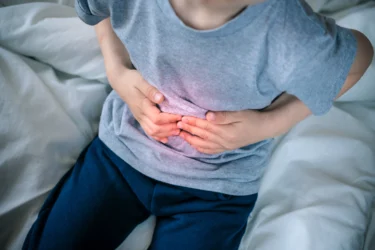
Piper nigrum and Piper longum have carminative activity. They help ease flatulence caused due to gases in the gastrointestinal tract. Asafoetida is also beneficial in getting rid of flatulence and distension of the abdomen1.

In a case study, Hingwashtak Churna provided relief from abdominal pain caused due to primary dysmenorrhea. Primary dysmenorrhea is marked by painful menstruation without pathological abnormalities such as the septate uterus and uterine fibrosis. Hingwashtak Churna could also regulate the menstrual cycle. It does this by easing the menstrual flow2.

One of the ingredients found in Hingwashtak Churna, ginger powder, is beneficial in treating indigestion. It reduces the food retention time, facilitates greater secretion of bile acids, and also increases the efficacy of the digestive enzymes present in the stomach. Hingwashtak Churna helps in facilitating digestion and treating indigestion1.
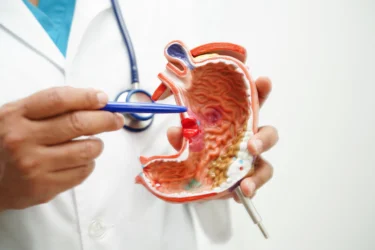
Aqueous extract of Hingwashtak Churna was found to be effective in reducing the size of gastric ulcers. Many studies suggest the role of antioxidant activity of its ingredients for the benefits in managing gastric ulcers. Hingwashtak Churna is a promising candidate to be used as an adjunct to the existing peptic ulcer treatment3.
In my experience, Hingvashtak Churna might be helpful in managing symptoms such as anorexia (loss of appetite). Its potential mechanism of action could involve improving digestion, reducing inflammation, and relieving discomfort in the gastrointestinal tract5.
Dr. Rajeev Singh, BAMS
The powder can be taken with ghee4. Your Ayurvedic doctor will prescribe you the dose based on your requirements.
Also Read: Sitopaladi Churna: Uses, Benefits, Side Effects & More!
You should keep the following points in mind:
Also Read: Avipattikar Churna: Uses, Benefits, Side Effects and More!
Hingwashtak Churna is a polyherbal Ayurvedic formulation sold in the form of powder. It is composed of eight main ingredients, namely Cuminum cyminum (Cumin), Zingiber officinale (ginger), Ferula foetida (asafoetida), Piper longum (long pepper), Piper nigrum (black pepper), Trachyspermum ammi (ajwain), Nigella sativa (fennel), and Rock salt (Saindhava Lavana)1.
Hingwashtak Churna is a polyherbal formulation used as a digestive aid and to treat digestive disorders. It is also used as a household remedy to deal with the problems associated with defecation, micturition, and flatulence. It is a carminative and antispasmodic1.
The ingredients present in Hingwashtak Churna are responsible for many of its health benefits. It has benefits in managing gastric conditions like gas, indigestion, and peptic ulcers1,3. It is also beneficial in managing dysmenorrhea2.
Hingwashtak Churna could provide relief from abdominal pain caused due to dysmenorrhoea. Hingwashtak Churna could also regulate the menstrual cycle2. Irrespective of the benefits, Hingwashtak Churna should not be used to replace standard or conventional medicines. It can be used as an additional supporting aid and not as a stand-alone option. Consult a gynaecologist or a doctor for better advice on dysmenorrhoea.
There is no safety data about its use in pregnant and lactating women. Pregnant women are advised to take it under the guidance of an Ayurvedic physician.
Hingwashtak Churna is beneficial in relieving the discomfort due to gas, acidity, and indigestion1. However, avoid self-medication. Consult an Ayurvedic physician or any medical practitioner for guided treatment options. The doctor will help you understand the cause of the problem before starting any treatment plan.
Hingwashtak Churna cannot be used as a cure for gastritis. Though it is helpful in managing stomach-related problems like indigestion, gas and acidity, it should not be used as a treatment option for gastritis1. Consult a doctor for the treatment plans available for gastritis. Avoid self-medication as it might worsen the condition. Hingwashtak Churna can be used as a digestive aid but use it should be used after consulting with a doctor1.
Disclaimer: The information provided here is for educational/awareness purposes only and is not intended to be a substitute for medical treatment by a healthcare professional and should not be relied upon to diagnose or treat any medical condition. The reader should consult a registered medical practitioner to determine the appropriateness of the information and before consuming any medication. PharmEasy does not provide any guarantee or warranty (express or implied) regarding the accuracy, adequacy, completeness, legality, reliability or usefulness of the information; and disclaims any liability arising thereof.
Links and product recommendations in the information provided here are advertisements of third-party products available on the website. PharmEasy does not make any representation on the accuracy or suitability of such products/services. Advertisements do not influence the editorial decisions or content. The information in this blog is subject to change without notice. The authors and administrators reserve the right to modify, add, or remove content without notification. It is your responsibility to review this disclaimer regularly for any changes.
Dashmularishta is a widely used Ayurvedic tonic prepared using roots of ten different plants, thus the term ”dasha”, meaning ten. According to Sarngadhara Samhita1 (a well-known Ayurvedic textbook), Dashmularishta has the power to restore the body from an inflammatory condition to good health by rebuilding the tissues and revitalising the body. It is thought to be a wonderful tonic for women during the prenatal and peri-menopausal phases. We are going to discuss the various Dashmularishta uses and benefits in this blog.
Dashmularishta has been conferred with various therapeutic uses in Ayurvedic medicine due to the combined effect of the herbs. The herbs used are:
Dashmularishta is an ayurvedic tonic with a wealth of therapeutic benefits3. Some of the Dashmularishta traditional uses and properties are listed below:
Osteoarthritis is a common progressive condition of weight-bearing joints, mainly the hips and knee joints. Osteoarthritis is significantly seen in the older population, and it is regarded as the leading cause of disability among them. Dashmularishta is considered one of the best additions to osteoarthritis therapy and may help reduce the inflammation and pain caused by joint inflammation. In animal studies2, Dashmularishta was proven to significantly reduce swelling and improve the ability to take longer steps.
Dashmularishta may help reduce the pain caused due to arthritis4. Oroxylum indicum, one of the primary ingredients of Dashmularishta, is well known for its pain-relieving property3. Animal studies2 indicate Dashmularishta benefits in osteoarthritis by potentially slowing the onset of stimuli that induce pain, preventing the pain itself. On further investigations, it may also prove effective in humans.
In Ayurveda, the herbal decoction called Dashmularishta is beneficial to manage heart diseases. Some ailments, like heart attack and stroke, are caused by the clotting of blood. Dashmularishta may act against the clotting property of platelets, which makes it an excellent agent to prevent blood clots and prevent heart attack and stroke. It may be used along with allopathic medicines for heart diseases5.
In my opinion, Dashmularishta is the ultimate body superhero. This awesome tonic made from a blend of powerful herbs may work wonders for your body. It’s like a detox and nourishment combo all in one. It may help to remove toxins and might nourish your precious body tissues11.
Dr. Rajeev Singh, BAMS
In Ayurveda, Bala roga (Paediatric conditions) in breastfed babies are managed by examining both mothers and babies. It is believed that any irregularity in the mother’s diet or her physiology may manifest in the child as allergic conjunctivitis. Hence, the infant’s mother with allergic conjunctivitis is given Dashmularishta to manage the irregularities in appetite and bowel movements. The infant may be given appropriate remedies depending on the symptoms, and Dashmularishta is considered a safe remedy for nursing mothers as well6.
For mothers who are breastfeeding, I would suggest trying Dashmularishta if you’re having trouble with your milk supply. This incredible tonic might work wonders in increasing milk production in women11.
Dr. Smita Barode, B.A.M.S M.S.
Also Read: Harad: Uses, Benefits, Side Effects, and More!
Dashmularishta is an ayurvedic tonic prescribed by the physician to be taken as directed.
Your Ayurvedic physician will prescribe you the form and dosage as per your health condition.
I would recommend Dashmularishta if you’re looking to go the extra mile during physical exercises. In a study10, it was found that it might actually boost your swim endurance and help you fight off fatigue. Talk about an antifatigue superstar!
Dr. Siddharth Gupta, B.A.M.S, M.D (Ayu)
No adverse side effects have been documented due to the administration of Dashmularishta9.
Also Read: Chandraprabha Vati (Chandraprabha Gulika): Uses, Benefits, Side Effects, Precautions & More!
Dashmularishta truly stands out as a versatile herbal tonic with numerous benefits for the body and mind. Whether you’re looking to reduce inflammation, support women’s health, or boost your overall vitality, Dashmularishta offers a natural way to nourish and strengthen your body. Remember, while it has been used safely for centuries, it’s always best to check with an Ayurvedic doctor to get the right dosage and guidance tailored for you.
Also Read: Noni Fruit Juice: Uses, Benefits, Side Effects By Dr. Rajeev Singh
Yes, Dashmularishta might improve the hormonal imbalance in women and rectify the menstrual period. This can improve the period cycle to a significant extent and restore it to health.
There have been no documented benefits of Dashmularishta specifically for men.
There have been no documented benefits of Dashmularishta in weight loss.
Dashmularishta might improve ovarian function by rectifying the hormonal imbalance that prevents one from conceiving. PCOS is a major cause of infertility in women. Dashmularishta is an ayurvedic medication that is an excellent remedy for PCOS and other gynaecological disorders. Thus, Dashmularishta is found to help conceive women with gynaecological disorders by improving the hormonal levels and preventing any related metabolic disorders.
Please consult your Ayurvedic doctor for appropriate prescriptions and directions. Your doctor will prescribe you a specific dosage depending on your symptoms.
No specific benefits of Dashmularishta have been documented for hair growth.
No specific benefits of Dashmularishta have been documented for the skin.
1. Pawar Nayana, Kogje Anushri, Bhondave Prashant, Nagarkar Bhagyashri, Kulkarni Omkar, Harsulkar Abhay, et al. Comparative free radical scavenging and anti-inflammatory potential of branded market samples of Ayurvedic formulations: Dashmoolarishta. International Journal of Pharma and Bio Sciences [Internet]. 2013 Jan [cited 2022 Mar 4];4(1):789–99. Available from: https://www.researchgate.net/publication/234877712_Comparative_free_radical_scavenging_and_anti-inflammatory_potential_of_branded_market_samples_of_Ayurvedic_formulations_Dashmoolarishta
2. Shetty YC, Godbharle S, Brahma S, Salgaonkar S, Rege NN. Evaluation of oral multi-herbal preparation of Dashmoolarishta on mice model of osteoarthritis. J Basic Clin Physiol Pharmacol [Internet]. 2017 Jun 21 [cited 2022 Mar 4]; Available from: https://www.researchgate.net/profile/Yashashri-Shetty/publication/32044759
3. Ahad Amjid, Ganai Ajaz, Zeeshan Najm Mohammad. Therapeutic potential of Oroxylum indicum: A review. Journal of Pharmaceutical Research and Opinion [Internet]. 2012 [cited 2022 Mar 4];163–72. Available from: https://www.researchgate.net/publication/285800921_Therapeutic_potential_of_Oroxylum_indicum_A_review
4. Reshma R. Parekar, Kumar K. Dash, Aditi A. Apte, Nirmala N. Rege. EVALUATION OF ANTI-INFLAMMATORY ACTIVITY OF ROOT BARK OF CLERODENDRUM PHLOMIDIS IN EXPERIMENTAL MODELS OF INFLAMMATION. International Journal of Applied Biology and Pharmaceutical Technology [Internet]. 2012 [cited 2022 Mar 4];3(3). Available from: https://www.researchgate.net/publication/327931225_EVALUATION_OF_ANTI-INFLAMMATORY_ACTIVITY_OF_ROOT_BARK_OF_CLERODENDRUM_PHLOMIDIS_IN_EXPERIMENTAL_MODELS_OF_INFLAMMATION
5. Parekar RR, Bolegave SS, Marathe PA, Rege NN. Experimental evaluation of analgesic, anti-inflammatory and anti-platelet potential of Dashamoola. Journal of Ayurveda and Integrative Medicine [Internet]. 2015 Jan 1 [cited 2022 Mar 4];6(1):11. Available from: https://www.ncbi.nlm.nih.gov/pmc/articles/PMC4395922/
6. Shantala Priyadarshini, Teragundi Panaga, Gangadkar Pooja. Ayurveda Management of Allergic Conjunctivitis in 6 months old baby- A successful case study . International Journal of AYUSH Case Reports [Internet]. 2020 [cited 2022 Mar 4];4(2). Available from: https://ijacare.in/index.php/ijacare/article/view/145
7. Nagarkar B, Mohite S, Kapoor E. EVALUATION OF EFFICACY OF DASHMOOLARISHTA IN CERVIVITIS: A PROOF-OF-CONCEPT STUDY. Article in Journal of Pharmacy and Pharmaceutical Sciences [Internet]. 2014 [cited 2022 Mar 4];3(6). Available from: https://www.researchgate.net/profile/Bhagyashri-Nagarkar/publication/264252846
8. Narayan Karandikar Ashwini. PCOS WITH INFERTILITY AND ITS AYURVEDA MANAGEMENT – A CASE STUDY [Internet]. International Journal of Ayurveda and Pharma Research. 2018 [cited 2022 Mar 4]. Available from: http://www.ijaprs.com/index.php/ijapr/article/view/1040
9. Dwivedi M, Sastry JLN, Rai RK, Vedula S. Clinical Evaluation of Dashmularishta (Ayurvedic formulation) in Restoring Normal Health of Postpartum Females . Journal of research in Traditional Medicine [Internet]. 2016 [cited 2022 Mar 7]; Available from: https://tmjournal.org/fulltext/140-1505301334.pdf?1646640147
10. Gupta A, Madaan A, Srivastava R, Kumar S, Sastry JLN. Evaluation of antioxidant, immunostimulatory and antifatigue properties of Dashmularishta using in vitro and in vivo assays. Indian J Exp Biol. 2018 Aug;56(8):598–603. Available from: https://www.researchgate.net/publication/327269604_Evaluation_of_antioxidant_immunostimulatory_and_antifatigue_properties_of_Dashmularishta_using_in_vitro_and_in_vivo_assays
11. Jalwal NK, Pawan, BK. Formulation and evaluation of tablet of a classical fermented preparation of Dashmularishta. Int J Pharm Sci Res. 2015 Mar 31;6(3):123–8. Available from: https://www.semanticscholar.org/paper/Formulation-and-Evaluation-of-tablet-of-a-Classical-N.-Jalwal/8a2e9c631a4ea975f652d33cacee6aae32225318
Disclaimer: The information provided here is for educational/awareness purposes only and is not intended to be a substitute for medical treatment by a healthcare professional and should not be relied upon to diagnose or treat any medical condition. The reader should consult a registered medical practitioner to determine the appropriateness of the information and before consuming any medication. PharmEasy does not provide any guarantee or warranty (express or implied) regarding the accuracy, adequacy, completeness, legality, reliability or usefulness of the information; and disclaims any liability arising thereof.
Khadirarishta is a polyherbal formulation used by people with rashes, itching, or sensitive skin. It is an ayurvedic liquid consisting of 18 ingredients. Also known as Khadirarishta, this preparation is used for treating skin problems, swollen lymph nodes, intestinal worms, leprosy, jaundice, and heart problems1,2. Khadirarishta consists of the ingredients Khadira, Devdaru, Bakuchi, Daruharidra, Haritaki, Bibhitaka, Amalaki, Dhataki, Kankola, Nagakeshar, Jatiphala, Lavanga, Ela, Tvak & Twakpatra, Pippali, honey, crystallised sugar lumps, and water.
Did you know?
Khadirarishta has the following therapeutic uses:

Khadirarishta contains a broad antibacterial range that includes bactericidal action against E. coli, S. aureus, and S. enterica. Khadirarishta’s method of action appears to be tied to bacterial membrane permeability disruption. Gallic acid, catechin, ellagic acid, and eugenol found in khadirarishta were identified as the four primary marker chemicals3.

A phenolic compound bakuchiol in Khadirarishta extracted from Bakuchi (seeds) and haritaki exhibited antifungal activity against many dermatophytes, yeasts and pathogenic fungi like Trichophyton rubrum and Microsporum gypseum, Epidermophyton floccosum, and Trichophyton mentagrophytes. In one of the studies, activity was found against other fungi such as Aspergillus niger, Alternari brassicae, Fusarium oxysporum, and Rhizoctonia cerealis, in which mycelia (the vegetative part of a fungus) growth was inhibited.
Another study4,5 showed a significant reduction in the incidents of seed”borne fungi, for example, Fusarium verticillioides and Aspergillus flavus, which can cause many diseases in maize crops and might release mycotoxins. These mycotoxins have a terrible effect on human and animal health.

Haritaki reduces pus collection in skin ailments and serves as a Rasayana, making it useful for erysipelas. Haritaki found in khadirarishta combined with oil aids in the healing of wounds, particularly burns. It aids in the improvement of skin tone5.
Daruharidra, and Bibhitaka present in khadirarishta also possess wound healing properties. They have anti-inflammatory and antioxidant activities which promote the health of the skin6,7.
Did you know that the ancient text ‘Sharangdhara Samhita’ holds a treasure trove of information about Khadirarishta? This traditional Ayurvedic text provides detailed insights into the ingredients used, the method of preparation, therapeutic indications, and even the mode of action of Khadirarishta9.
Dr. Siddharth Gupta, B.A.M.S, M.D (Ayu)

Haritaki present in khadirarishta shows activity against respiratory disorders like COPD, wheezing, rhinitis, hoarseness of voice, cough, hiccups and breathing difficulty as it reduces congestion in the lungs5.
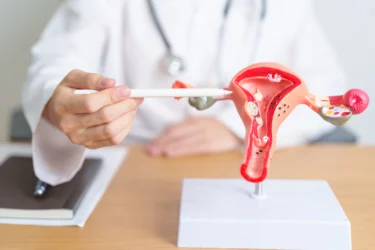
Haritaki present in khadirarishta acts as a uterine tonic and helps in Shukrameha (passage of sperms in urine), and Leucorrhoea (whitish/yellowish vaginal discharge)5.

The stem of Daruharidra found in khadirarishta shows anticancer properties in human colon cancer cell lines when extracted in methanol. Methanolic extract of Daruharidra stem inhibits cancer-causing cells in a concentration-dependent manner. Berberine, an alkaloid derived from the Daruharidra plant, has been reported to suppress the carcinogenesis produced by different elements in small animals in a dose-dependent way7.
Khadirarishta, a traditional herbal preparation, contains an important ingredient called Khadira. It is a special herb that might help with various health issues from conjunctivitis and coughing up blood to nausea and diarrhoea10.
Dr. Smita Barode, B.A.M.S, M.S.
You can use Khadirarishta by mixing a fixed amount of the liquid with lukewarm water1.
One of the key ingredients in Khadirarishta is Daruharidra, which has some remarkable properties! This special herb is known to possibly provide a rejuvenating effect, making you feel refreshed and revitalised10.
Dr. Rajeev Singh, BAMS
Also Read: Neem: Uses, Benefits, Side Effects, and More!
Please consult a physician before using in pregnant and lactating women and in children.
Also Read: Kutki: Uses, Benefits and Side Effects by Dr. Rajeev Singh
Khadirarishta is an ayurvedic formulation consisting of 18 ingredients like Khadira, Devdaru, Bakuchi, Daruharidra, Haritaki, Bibhitaka, Amalaki, Dhataki, Kankola, Nagakeshar, Jatiphala, Lavanga, Ela, Tvak & Twakpatra, Pippali, honey, crystallised sugar lumps and water.
When used as directed by your doctor, Khadirarishta normally has no side effects. This multi-herbal ayurvedic composition, however, can create a burning sensation or heartburn if ingested without water1. An overdose of this formulation could harm your heart, kidneys or liver2.
No, khadirarishta is not known to show any activity for dental problems.
No, khadirarishta does not cause inflammation. It has various herbs that have anti-inflammatory properties and may help in reducing inflammation.
Khadirarishta helps in increasing the haemoglobin of the blood and hence helps in the treatment of anaemia8.
Khadirarishta should be mixed with water before consumption. The dose of this ayurvedic formulation should be as prescribed by your doctor.
When khadirarishta was consumed with lukewarm water after meals for a few months, it showed improvement in the symptoms of eczema like itching, skin discolouration and secretions8.
Antidiabetic and hypoglycemic properties: Emblica fruit powder lowered blood sugar levels in normal and hyperglycemic rabbits, demonstrating hypoglycemic efficacy.
Anti-peptic ulcer activity: With traditional antacids and Emblica fruits, 30 instances of ulcer and non-ulcer dyspepsia showed equivalent improvement8.
1. Shinde RR, Bhangale K. KHADIRARISHTA: A MEDICAL REVIEW. International Journal of Research -GRANTHAALAYAH [Internet]. 2017 Oct 31 [cited 2022 Feb 28];5(10):72–5. Available from: https://www.granthaalayahpublication.org/journals/index.php/granthaalayah/article/view/IJRG17_A10_712/2158
2. Sharif T, Deepa KN, Nahar K, Mian Y. Evaluation of cardiovascular activities of an ayurvedic preparation ”Khadirarishta” in rat model. European Journal of Pharmaceutical and Medical Research. 2015;(January). Available from: https://www.researchgate.net/publication/282322014_EVALUATION_OF_CARDIOVASCULAR_ACTIVITIES_OF_AN_AYURVEDIC_PREPARATION_’KHADIRARISHTA’_IN_RAT_MODEL
3. Balkrishna A, Gupta AK, Gupta A, Singh P, Singh K, Tomar M, et al. Antibacterial activity and mechanism of action of an ayurvedic formulation Khadirarishta. Journal of Herbal Medicine. 2022 Mar 1;32. Available from: https://www.researchgate.net/publication/354148224_Antibacterial_Activity_and_Mechanism_of_Action_of_an_Ayurvedic_formulation_Khadirarishta
4. Alam F, Khan GN, Asad MHH bin. Psoralea corylifolia L: Ethnobotanical, biological, and chemical aspects: A review. Vol. 32, Phytotherapy Research. John Wiley and Sons Ltd; 2018. p. 597–615. Available from: https://pubmed.ncbi.nlm.nih.gov/29243333/
5. Meher SK, Panda P, Das B, Bhuyan GC, Rath KK. Pharmacological Profile of Terminalia chebula Retz. and Willd. (Haritaki) in Ayurveda with Evidences . Research Journal of Pharmacology and Pharmacodynamics. 2018;10(3):115. Available from: https://www.researchgate.net/publication/327831052_Pharmacological_Profile_of_Terminalia_chebula_Retz_and_Willd_Haritaki_in_Ayurveda_with_Evidences
6. Ashutosh Gupta RKK and AKP. Pharmacological Aspects of Terminalia belerica. 284 p. Available from: https://www.researchgate.net/publication/321193582_Pharmacological_Aspects_of_Terminalia_belerica
7. Kumar Saini Jubilant Biosys N. Berberis aristata: A Review [Internet]. Article in International Journal of Research in Ayurveda and Pharmacy. 2011. Available from: www.ijrap.net
8. Parulkar G. KHADIRARISHTA: A MEDICO STUDY. Parulkar World Journal of Pharmaceutical Research [Internet]. 2016 [cited 2022 Feb 28];5(11). Available from: www.wjpr.net
9. Parulkar G. KHADIRARISHTA: A medico study. World Journal of Pharmaceutical Research. 2016;5(11):568-72. DOI:10.20959/ Available from: https://wjpr.s3.ap-south-1.amazonaws.com/article_issue/1477907087.pdf
10. Shinde RR, Bhangale K. KHADIRARISHTA: A MEDICAL REVIEW. International Journal of Research – GRANTHAALAYAH. 2017 Oct 31;5(10):72-75. doi:10.29121/. Available from: https://www.granthaalayahpublication.org/journals/index.php/granthaalayah/article/view/IJRG17_A10_712/2158
Disclaimer: The information provided here is for educational/awareness purposes only and is not intended to be a substitute for medical treatment by a healthcare professional and should not be relied upon to diagnose or treat any medical condition. The reader should consult a registered medical practitioner to determine the appropriateness of the information and before consuming any medication. PharmEasy does not provide any guarantee or warranty (express or implied) regarding the accuracy, adequacy, completeness, legality, reliability or usefulness of the information; and disclaims any liability arising thereof.
Links and product recommendations in the information provided here are advertisements of third-party products available on the website. PharmEasy does not make any representation on the accuracy or suitability of such products/services. Advertisements do not influence the editorial decisions or content. The information in this blog is subject to change without notice. The authors and administrators reserve the right to modify, add, or remove content without notification. It is your responsibility to review this disclaimer regularly for any changes.
Cissus quadrangularis, commonly known as ‘Hadjod’ in Hindi, is a fleshy plant belonging to the Vitaceae family1. It is known by numerous vernacular names depending on the region. In Bangladesh, it is known as Hathisur in Sri Lanka, it is known as Heeressa in West Africa, it is known as Treebine, Zarnazaru, Banddiagra, Oongoonujaara in Thailand, it is known as Khankho, phet sangkhaat, san cha khuat and in India, it is known as Bonesetter, Adamant creeper, Veldt-grape, Hadjod, Hadsanka and Asthisamadhani. Hadjod, also known as Asthisamharaka, is a luscious herb found in India’s warmest regions. It can grow up to 500 meters above sea level in plain coastal areas, forests, and wastelands. Stem cuttings are used to propagate the herb. From June to December, the herb blooms. It is a climbing herb that turns leafless as it ages. It is a shrubby climber that can grow up to 1.5 meters tall. The plant blossoms small greenish-white flowers. The leaves are 2.5-5 cm long, broadly ovate or kidney-shaped leaves. The calyx is cup-shaped, short, and deciduous. There are 4-5 petals on each flower. The fruits are obovoid, very acrid, one-seeded, and dark purple to black. The stem is smooth, branched, glabrous, subangular, and fibrous and found to be buff colored with a greenish tinge. The stems measure 8–10 cm in length and 1–1.5 cm in width2. Iridoids, alkaloids, flavonoids, stilbene derivatives, sterols, triterpenes, fatty acids, methyl esters, and other phytochemicals have been found in the hadjod. The presence of five well-known chemicals on leaves was discovered, including Tetratriacotanol, Ecosyl eicosanoate, Tetratriacontanoic acid, α,β-amyrin, β-sitosterol. Polyphenols such as Daidezein, Quercetin, and Genistein were also reported in the leaves1.
The nutritional content fount in hadjod root powder/100 gm is:
Hadjod might be your ally in dental problems! Yes, you read it right Recent studies have revealed that the use of Hadjod may help in alleviating dental cavities when they start due to its anti-bacterial nature5.
Dr. Siddharth Gupta, B.A.M.S, M.D (Ayu)

Traditional Hadjod folklore is that it is used to relieve pain. Animal models that are widely accepted worldwide were used to test its analgesic potential. Hadjod’s effects were shown to be effective even at low doses, indicating that the herb has high potency in simulating central and peripheral pain. The phytosterols β-sitosterol and β-sitosterol glycoside, terpenoids, and phenolic substances such as resveratrol, quercetin, quercitrin, and kaempferol found in hadjod are thought to have analgesic properties2.

The presence of phytochemicals like polyphenols, glycosides, vitamin C, and β-sitosterol in hadjod may contribute to antiulcer potential or accelerate ulcer healing by releasing polyamines and transforming growth factor-α. Hadjod displayed cytoprotection by increasing potassium, hexosamine, bicarbonate, and the carbohydrate, protein ratio while lowering pepsin, proteins, and acid secretion in the stomach2.

Traditional literature mentions the use of hadjod in treating a variety of bacterial and viral infections. The steroids and flavonoids present in a partially purified extract of the hadjod stem were found to have excellent antiviral activity against herpes simplex virus types I and II2. In an antibacterial study, six different extracts of hadjod stem were tested against gram-positive and gram-negative bacteria. As a result, methanol extract was found to have superior antibacterial activity against S. pyogenes, B. subtilis, S. aureus, P. aeruginosa, and S. typhi, among other bacteria2. The antifungal activity of hadjod extract was determined by comparing it to the standard medication fluconazole. The diameter of the zone of inhibition generated on the surface of Petri dishes was used to determine antifungal activity. The study found that hadjod extract had promising antifungal efficacy against Aspergillus flavus1.
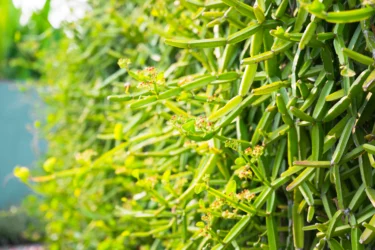
On the Haemonchus contortus worm, the anthelmintic activity of hadjod extract was investigated. The presence of alkaloids, flavonoids, tannins, and phenols in the extract may contribute to its anthelmintic effect2.

Hadjod has shown anticancer and antitumor activity in a variety of cancer cell lines, including breast cancer, osteosarcoma, leukaemia, Dalton’s ascitic lymphoma, and Erlich ascitic-induced carcinoma. The extract of hadjod at various doses has been investigated to protect rats from breast cancer. All biochemical and haematological changes caused by 7,12-Dimethylben (a) anthracene were reversed when rats were given hadjod extract2.

Ear oedema was used to test hadjod’s anti-inflammatory activity in rats. Hadjod can reduce swelling, relieve pain, treat allied illnesses associated with fractures, and aid in healing fractures. The inclusion of Beta-sitosterol and luteolin flavonoids in hadjod is responsible for its anti-inflammatory properties. Hadjod inhibits many inflammatory mediators that increase vascular permeability, support vasodilation, and cause oedema development3.

In hyperlipidemia models in rats, hadjod extract significantly reduced the total cholesterol, triglycerides, low-density lipoprotein cholesterol, and atherogenic index while increasing high-density lipoprotein cholesterol levels. Hadjod’s antihyperlipidemic properties are thought to be related to phytosterols, including stigmasterol, β-sitosterol, ketosteroid, and flavonoids like kaemferol, quercetin, and daidzein. Phytosterols may lower low-density lipoprotein cholesterol levels or diminish intestinal cholesterol absorption by increasing faecal cholesterol excretion2.

In rats, an extract of hadjod stem restored significant abnormalities caused by lead acetate. The use of hadjod extract on rats increases total sperm count. Antioxidant deficiency harms sperm viability and motility in males. Hadjod’s anti-infertility effect is attributed to its antioxidant enzymes restorative capacity or pregnancy abruption, implantation inhibition, and abortion induction2.

In diabetic rats, the injection of hadjod extract at various doses considerably lowers blood glucose levels. Furthermore, hadjod extract caused a rise in plasma insulin levels and restored liver antioxidant enzymes and histology in diabetic mice. Improvements in glycemic metabolism and regulation, free radical elimination, cholesterol reduction, insulin secretion, and microcirculation can contribute to hadjod’s antidiabetic action2.

Hadjod extract’s anti-hemorrhoids activity was tested on an isolated human umbilical vein, which caused contraction of vascular smooth muscles of the vein. Hadjod extract was found to have a vasoconstrictive impact on the intact inner lining of the vein2. In clinical research, taking a tablet of hadjod reduced piles symptoms in patients. Flavonoids, which are significant phytochemicals, are thought to help treat haemorrhoidal diseases by reducing localized bleeding, itching, and discomfort, potentially by improving capillary resistance and venous tonicity by lowering capillary permeability2.
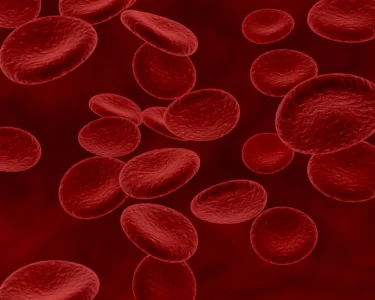
Hadjod’s extract significantly increased blood carbon clearance, blood immunoglobulin levels, and a delayed type of hypersensitive response to sheep red blood cells. In another study, hadjod extract nanoparticles corrected immunosuppression in immunosuppressive animals using sheep red blood cells. The findings suggested that hadjod had immunomodulatory properties in both cellular and humoral immunity.
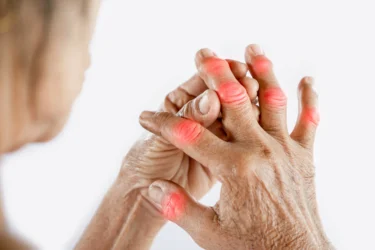
Hadjod has been shown to have antiarthritic potential in various animal models. Hadjod extract was found to have an antiarthritic effect by reducing bone and cartilage degeneration, excessive paw inflammation, and associated biochemical and haematological changes2.
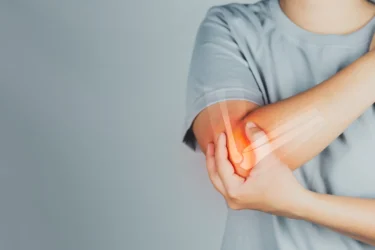
Hadjod’s antiosteoporotic potential has been demonstrated in various animal models by several authors. An osteoporotic rat model of ovariectomy, closed fracture by bending the radius-ulna in rats and dogs was used to test the antiarthritic activity of hadjod extract. The work was carried out in vitro using cell lines. Few clinical studies have shown that hadjod, combined with Zingiber officinale, can reduce joint swelling, discomfort, and soreness in osteoporotic and fractured patients. Hadjod’s bone protective activity is thought to be due to its steroidal content, which functions as phytoestrogens to prevent or minimise bone loss and suppress bone reabsorption caused by oestrogen deficiency2.
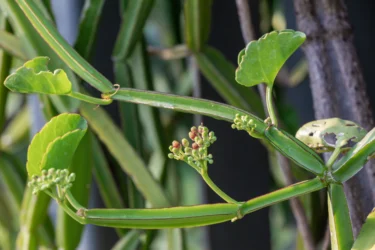
Various research has already assessed the antioxidant activity of hadjod utilizing different antioxidant assays and procedures. By lowering serum enzyme levels and boosting antioxidant enzyme levels, the antioxidant activity of hadjod extract was examined on liver protective activity2.
I recently read an article that says Hadjod may be used as a diuretic. Hadjod is known for its anti-inflammatory and antioxidant properties6.
Dr. Rajeev Singh, BAMS
Also Read: Banana Leaf: Uses, Benefits, Side Effects By Dr. Smita Barode
Your Ayurvedic physician will guide you for the appropriate dose and frequency of medication as per your condition. Avoid self-medication.
Also Read: Kachnar (Bauhinia Variegata): Uses, Benefits, Nutritional Value & More!
Various studies demonstrate that hadjod extracts are safe and free of side effects at commonly used doses. The reported side effects of hadjod extract are lack of appetite, staggering, dyspnoea, and diarrhoea in a limited case4.
Also Read: Akarkara (Pellitory): Uses, Benefits, Side Effects & More!
It is known as Heeressa, Hathisur, Khankho, Zarnazaru, Treebine, Banddiagra, Oongoonujaara, phet sangkhaat, san cha khuat, Veldt-grape, Adamant creeper, Asthisamadhani, Bonesetter, and Hadsanka in different regions2.
The plant contains several phytoconstituents like iridoids, stilbene derivatives, sterols, triterpenes, alkaloids, fatty acids, methyl esters, flavonoids1,2.
It treats constipation, piles, tumours, blindness, loss of appetite, muscular pain, vata and kapha, epileptic fits, chronic ulcers, and bone fractures. It is also used as a digestive, anthelmintic, analgesic, laxative, stomachic, tonic aphrodisiac agent, treatment of back and spine problems, pus removal2.
Hadjod is used in hadjod tablets, capsules, powder and drops2.
Yes, hadjod has bone protective activity. Hadjod’s protective action is thought to be due to its steroidal content, which functions as phytoestrogens to prevent or minimise bone loss and suppress bone reabsorption caused by estrogen deficiency2.
Disclaimer: The information provided here is for educational/awareness purposes only and is not intended to be a substitute for medical treatment by a healthcare professional and should not be relied upon to diagnose or treat any medical condition. The reader should consult a registered medical practitioner to determine the appropriateness of the information and before consuming any medication. PharmEasy does not provide any guarantee or warranty (express or implied) regarding the accuracy, adequacy, completeness, legality, reliability or usefulness of the information; and disclaims any liability arising thereof.
Links and product recommendations in the information provided here are advertisements of third-party products available on the website. PharmEasy does not make any representation on the accuracy or suitability of such products/services. Advertisements do not influence the editorial decisions or content. The information in this blog is subject to change without notice. The authors and administrators reserve the right to modify, add, or remove content without notification. It is your responsibility to review this disclaimer regularly for any changes.
Abhayarishta is an ayurvedic formulation prepared by fermenting the decoction of the parts of the following plants fruit of Haritaki (Terminalia chebula Retz), fruit of Amalaki (Emblica officinalis Garten), fruit pulp of Kapittha (Feronia elephantum Correa), root of Indravaruni (Citrusllus colocynthetis Schrad), fruit of Vidanga (Embillia ribes Burn.F.), root of Pippali (Piper longum Linn), bark of Lodhra (Sympolocos racemosa Roxb), fruit of Maricha (Piper nigrum Linn), fruit of Kankola (Piper cubeba Linn), Guda (Jaggery) and water1. Abhayarishta is a type of Arishta formulated by anaerobically fermenting the decoctions plant parts mentioned above (kasaya) with jaggery solution in a sealed container for a specific period. This process produces ethanol that in turn works as a preservative. Abhayarishta is a similar Arishta prepared using the decoctions of the plants mentioned above2,4. The fermentation process of the Abhayarishta helps incorporate the most significant property, namely antioxidant activity, to act on anorectal diseases like piles2.
The nutritional value of the significant ingredients of Abhayarishta are:
Researchers believe that Abhayarishta might be helpful in the symptoms associated with Attention Deficit Hyperactive Disorder (ADHD) such as vomiting (emesis). Abhayarishta is believed to be anti-emetic14.
Dr. Siddharth Gupta, B.A.M.S, M.D (Ayu)
Since ancient times, Abhayarishta has been in use to treat various gastrointestinal and other various ailments related to the digestive and excretory system. It consists of a combination of various herbs which imparts a set of unique therapeutic qualities to the formulation to manage different illnesses. One of the major and vastly prevailing diseases of recent times is piles, which is mainly caused due to sedentary lifestyle and improper diet. Abhayarishta is one of the prime medications that has been found to be very beneficial in managing such diseases in the field of Ayurveda9.
Some of the properties that makes Abhayarishta a better choice of remedy is:
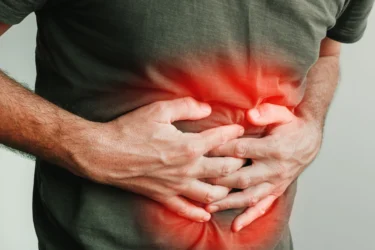

Also Read: Shallaki (Boswellia serrata): Uses, Benefits, Side Effects & More!

Also Read: Banyan: Benefits, Uses, Side Effects & More!
Abhayarishta is usually mixed with equal amounts of water and taken orally as directed by your Ayurvedic physician11. Your Ayurvedic physician will prescribe you the form and dosage as per your health condition.
Also Read: Senna: Uses, Benefits, Side Effects and More By Dr. Rajeev Singh
Yes, Abhayarishta is used to manage the symptoms of fistula. It is used along with another set of medications to soothe the symptoms13
Yes, Abhayarishta is very beneficial to reduce the symptoms of piles by soothing the pain and inflammation in the perianal area. It can also be used to dry the pile mass and shrink it in non-bleeding piles2,9.
Abhayarishta can be used as a laxative to help manage constipation. It can induce peristaltic movement in the intestine and allow easy defecation. It also can soften the stool to reduce pain during defecation10,11.
No, Abhayarishta may be used along with other supportive topical applicants to help reduce the patches on the skin due to vitiligo. It helps combat the immune system’s attack on the pigment-producing melanocytes causing pale patches of skin without the pigment1.
Abhayarishta is not prescribed for acidity.
There are no documented side effects of Abhayarishta.
Please consult do not self-administer Abhayarishta without a doctor’s prescription. Please consult your physician for case-specific recommendations.
Please follow the directions given by your physician for an appropriate course of treatment and dosage.
The prescription combination will be decided by your physician depending on your symptoms and diagnosis. Please consult your physician for further queries.
Please read the package instructions or consult your ayurvedic pharmacist for appropriate information.
Disclaimer: The information provided here is for educational/awareness purposes only and is not intended to be a substitute for medical treatment by a healthcare professional and should not be relied upon to diagnose or treat any medical condition. The reader should consult a registered medical practitioner to determine the appropriateness of the information and before consuming any medication. PharmEasy does not provide any guarantee or warranty (express or implied) regarding the accuracy, adequacy, completeness, legality, reliability or usefulness of the information; and disclaims any liability arising thereof.
Links and product recommendations in the information provided here are advertisements of third-party products available on the website. PharmEasy does not make any representation on the accuracy or suitability of such products/services. Advertisements do not influence the editorial decisions or content. The information in this blog is subject to change without notice. The authors and administrators reserve the right to modify, add, or remove content without notification. It is your responsibility to review this disclaimer regularly for any changes.
Next Page »